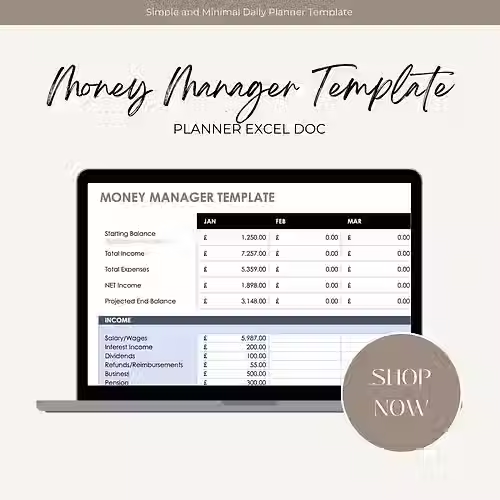Innovative Features to Enhance Your Website's Appeal
- The Becky Effect Edit
- Jun 10
- 4 min read
In today's digital landscape, your website is often the first impression potential customers will have of your business. Therefore, it is crucial that your online presence is not only functional but visually appealing as well. Innovative features can significantly enhance the appeal and user experience of your website. Here are some key elements to consider when upgrading your website.
Essential Website Features
When designing or revamping your website, consider these essential features that can boost user engagement and satisfaction. A well-structured website design can provide seamless navigation and a more enjoyable experience for visitors.
1. Responsiveness and Mobile Optimization
With over half of web traffic coming from mobile devices, having a responsive design is no longer a luxury - it is a necessity. Responsive websites automatically adjust their layout based on the screen size, ensuring that users have a consistent experience regardless of the device they are using.
For instance, websites with mobile optimization generally experience lower bounce rates and higher interaction rates. According to Google, mobile-friendly websites are prioritized in search rankings, which is essential for SEO success.

2. Enhanced Loading Speed
Users expect web pages to load quickly. Research indicates that 47% of consumers expect a web page to load in two seconds or less. If your website takes longer than that, you risk losing potential customers.
Optimize your images, enable browser caching, and minimize CSS and JavaScript files to speed up loading times. You can use tools like Google's PageSpeed Insights to analyze your site and identify areas for improvement.

3. Visual Storytelling Components
Visual elements can significantly enhance your website's storytelling capabilities. Incorporating videos, infographics, and images can break up text and keep visitors engaged.
For example, a restaurant website can showcase its menu through a video of chefs preparing dishes, giving users a taste of the experience. Using high-quality images and compelling visuals can convey information quickly and attractively, helping to keep visitors on your page longer.

User-Friendly Navigation
A user-friendly navigation system is key to retaining visitors and encouraging exploration. If users struggle to find the information they need, they are likely to leave your site quickly.
4. Clear Menu Structure
Your website's menu should be intuitive and straightforward. A well-organized menu helps users to find what they are looking for quickly. Use clear labels, and avoid using jargon or overly clever titles that may confuse visitors.
Consider implementing breadcrumb navigation, which allows users to see their location within the website’s structure. This feature can improve user experience and reduce abandonment rates significantly.
5. Search Functionality
A search bar is crucial for larger sites with extensive content. A well-implemented search function can save users time and improve their experience by helping them find specific content quickly.
Additionally, consider adding filters to search results, allowing users to narrow down options based on categories, tags, or date ranges. This feature is especially useful for e-commerce sites with a vast catalog.
Interactive Elements
Engaging visitors through interactive elements can significantly enhance their online experience, keeping them on your site longer and encouraging them to return.
6. Chatbots and Live Chat
Integrating chatbots or live chat support can provide immediate assistance to users. Chatbots can handle common queries, directing users to information quickly without overwhelming your support team.
On the other hand, live chat provides a personal touch, allowing users to resolve their issues in real-time. According to a study by Zendesk, customer satisfaction can increase by up to 80% when live chat is available.
7. Dynamic Content
Dynamic content refers to personalized content that changes based on user interactions or preferences. For example, personalized recommendations based on a user's previous behavior can significantly increase engagement.
You can utilize dynamic content in email newsletters, product recommendations, or even blog articles. By tailoring the experience for users, you can foster a deeper relationship with your audience.
Aesthetic Design and Branding
A visually appealing website is essential for capturing and retaining user interest. Implementing strong design and branding can differentiate your business from competitors.
8. Consistent Branding
Your website should reflect your brand's identity through consistent color schemes, typography, and imagery. A cohesive look reinforces brand recognition and loyalty.
Utilize branding elements consistently across all pages. This approach includes the application of logo, colors, and font styles - maintaining a professional appearance throughout your site.
9. High-Quality Imagery
Investing in high-quality images is paramount. Original photos or custom graphics can create a unique online identity and improve aesthetic appeal.
Avoid using stock photos that can make your brand seem generic. Instead, opt for images that resonate with your audience. For instance, a lifestyle brand might showcase authentic customer experiences rather than staged photos.
Conclusion with Final Thoughts
Incorporating these innovative features into your website can enhance user experience and drive engagement, creating a platform that reflects your brand's values and aesthetics. Remember, the key to effective web design lies in understanding your audience's needs and preferences.
As you explore options for improvement, consider aspects like creative website development to ensure a forward-thinking approach. By integrating not only functionality but also visual appeal, you create a compelling online experience that resonates with users. The digital world is ever-evolving - staying ahead requires both innovation and responsiveness.



Comments